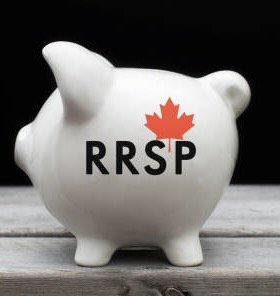Reduce Your Taxable Income With The Following Tax Deductions
Source: Unsplash
It’s that time of the year again to start thinking about filing your taxes. Like it or not…
Hopefully you have saved your receipts. Perhaps categorized them or even entered them into a bookkeeping system. Or, maybe you just drop them all in a shoebox and then pass this box to your bookkeeper or accountant.
Either way, you need to be aware of the following three categories of tax deductions if you are a salaried or commission based employee, so you can take advantage of them when getting ready for your tax filing.
RRSPs
An RRSP is a Registered Retirement Savings Plan, which is a vehicle for retirement savings for employees and self-employed individuals.
Introduced by the federal government in 1957, it is a plan that is registered with the government but established by the individual who is also the contributor. Other contributors can be spouses or common-law partners.
An RRSP is a tax deferral which means you will be paying tax once you start drawing from it. Once you turn 71 your RRSP must be rolled into a registered retirement income fund or RRIF.
This type of fund gives you a steady income in retirement. Still registered with the government it is an arrangement between you and a carrier, such as a bank, trust company or insurance company.
RRSP Facts
You can contribute to your RRSP your entire life up to December 31st of the year you turn 71 years old.
CRA will show your maximum annual contribution in “My Account” on their website. If you don’t have access to your account with CRA, let us know. We can help you set this up.
If you don’t use the maximum annual contribution you can carry the unused portion forward from year to year.
You can use the room you have for contributions by putting it in your spouse’s RRSP. You will get the tax deduction, your spouse will get the pension.
The deadline for 2023 contributions is March 1, 2024.
There are penalties for over-contributing to your RRSP. The government does not allow you to pay more than $2000 over your contribution limit. Any amounts beyond this over contribution will be subject to tax.
Each year your contribution room grows by 18% of your earned income less any pension adjustments on your T4 slip. The maximum growth is $30,780 (2023). ($32,490 for the 2024 Tax year)
Tax savings are at your highest marginal tax rate. When you drop to a lower tax rate then the tax savings will be at the lower rate. Both Federal and Provincial income taxes are calculated in marginal steps. Although both use different rates, consider your tax bill as a set of rickety steps. As your income moves from one step up to the next step the incremental income above the previous step is taxed at the appropriate marginal tax rate.
Let's say your income is $5,000 into the next step on your tax staircase and you make a $10,000 RRSP contribution. The tax savings will be $5,000 times the marginal tax rate of the step that your highest income is on and then the next $5,000 will be at the previous incremental tax rate.
Our tax consulting services help you decide how much to contribute to you RRSP.
Employment Expenses
To deduct this type of expense you will need a T2200 Declaration of Conditions of Employment form signed by your employer. This applies to both salaried and common employees.
The following expenses can be claimed by both salaried and commission employees:
Home Expenses
Utilities
Utility portion of your condominium fees
Home internet
Maintenance and minor repair costs
Rent for a house or apartment where you live
Home expenses are allocated on a proportional square foot basis.
Commission employees can also claim home insurance, property taxes and lease expenses of office equipment that reasonably relate to earning a commission income
Car Expenses
Fuel & Oil
Repairs
Insurance
Maintenance
These expenses are calculated on a percentage basis of usage for business purposes.
Keep a log book for mileage, or use a mileage tracker such as Mile IQ.
Office Expenses
Should your T2200 say that you have to pay for office expenses and that your employer does not reimburse them, you can claim these as well.
Meals & Entertainment
If you claim any of this type of expense, you have to make sure that you keep your receipts and that you have marked them with the name of the person(s) you met with, as well as the topic of the meeting.
Source: K. Kalbarczyk (Unsplash)
Any claim is limited to 50% of the expense for income tax purposes after HST and tips.
For example: if you entertain one other person for $50, you can claim $25.00. Or, if you entertain 3 other people and your bill comes to $200, you can claim 50% or $100.
Professional Fees
The following professional fees are tax deductible:
Legal Fees paid to collect or establish a right to salary or wages
Legal fees paid to collect a retiring allowance or pension benefits
Legal fees paid to make child support payments non-taxable
Legal fees and accounting fees paid to get advice or assistance to respond to CRA as follows:
Review of your income, deductions or credits for a particular year
When you object to or appeal an assessment
When appealing to a decision made under the Income Act, the Employment Insurance Act, the Canada Pension Plan or the Quebec Pension Plan
It is important to remember to reduce your claim by any amounts you have received as a result from any of above-mentioned actions.
Need help getting your financial information organized for your upcoming tax filing? Want us to do your tax return for you and file it upon completion?
Let us know. We are here to help - every step of the way.
Call us at 519-836-4145 to book an appointment. Or, email me directly at keith@kmclarencpa.com.






